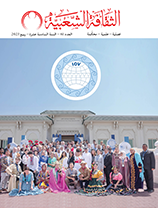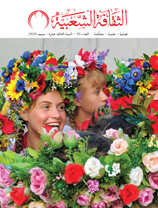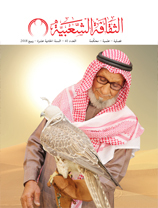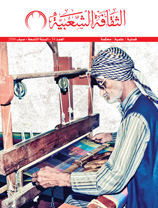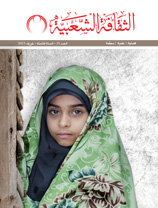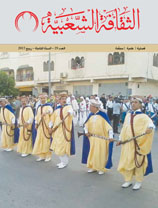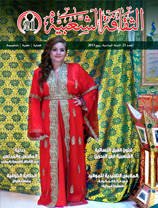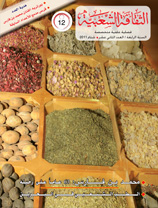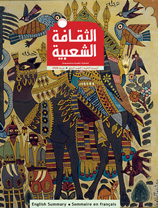Characteristics of the Moroccan Dresses and Their Relationship to Culture and Civilization
Issue 8

Al-Hussain Al-Edreesi (Morroco)
The aim of this research paper is to show that dresses have multiple cultural and artistic values that go beyond their main function. Dresses nowadays can be seen as an archeological material that hugely aroused the curiosity of historians, philosophers, sociologists, economists, different artists and craftsmen. All these people are studying the tiniest particulars of dresses, their fabric and color, their form, the way they are cut out and sewed. This study is done in a way that provides a deep vision of the spirit of time and of the prevailing traditions. Clothes mirror the present status of the society, its specific circumstances and level of life. The colors of clothes, their form and the material from which they are made are determined by the cultural and geographical spaces. This can be observed in the different styles of national dresses whose production was not merely a spontaneous and naive work. Their production was rather subjected to an artistic vision that was derived from some specific qualities of the culture and the civilization that were sustained by the national egos of the country. A number of Moroccan scientists have set out to document the Moroccan dresses and their features. Among them was Aba Abdulla Mohammed Al-Wajdi from the city of Fes, who wrote a book entitled: “Talisman of Minds and Reminder of Ethics”. In this book, he described more than two hundred pieces of clothes: some of them where old-fashioned and others were modern. This valuable book was, unfortunately, lost. Hassan Al-Wazzan, another specialist in Moroccan dresses, gives the following description of the women dresses in Morocco: “Women dresses are so beautiful, although in the hot days, women do not wear but a shirt with ugly, hanging-down pants. In the winter days, they wear wide-sleeved dresses that are sewed from the front, resembling men’s clothes. When going out, they wear long trousers covering their legs and veils that conceal heads and the rest of the body. Also, they cover the face with a piece of fabric that makes apparent only their eyes and they put in their ears big, golden earrings inlaid with lovely, precious stones. Their wrists are encircled by bracelets that are made from gold, while the bracelet that surrounds the woman’s hand weighs around 350 grams. Women who do not belong to the top elite adorn themselves with silver bracelets and hang silver anklets on their feet. Thus, residents of the city of Fes, women and men, wear pants, which they never wore before, but they are satisfied with that. The author indicates that the professional differentiation in Fes had required wearing a particular dress that matches the type of profession. As a result, each professional unit has an equivalent unit of clothes that corresponds to its nature and that distinguishes it from other professions. Hassan Al-Wazzan referred to this phenomenon in the second century of the Hegira, when he described the life of porters, indicating that “these people are working, dressed in short clothes of the same color, and when the work finishes, they wear whatever they wish”. The origins of the Moroccan clothes are intertwined with the Moroccan personality and with its characteristics, which are relevant to national culture and civilization. A proof of this is the fact that clothes transcendent religious beliefs. This is the reason why Moroccan Jewish people shares with Moroccan Muslims wearing burnoose, “Kisa’a” (garment), and “Tashameer” (cloaks). Similarly, the dress of the local Jewish woman does not differ much from the dresses of the rest of women in the Moroccan society. In accordance with the prevailing dressing traditions, the Moroccan Jewish woman shares with her Muslim counterparts many types of clothes, such as “izar” (shawl), “Hayek” (weaver), “Durra’a’’ (jubbah, loose outer garment), and “Tashameer” (cloaks). This fact symbolizes the unity of the features of the Moroccan dress that are related to culture and civilization. This unity rises above ideological differences, thus embodying the essence and real value of the close relationship between identity, on the one hand, and values of artistic beauty, love, equality, and humanistic unity that embraces diversity and multiplicity, on the other hand.











